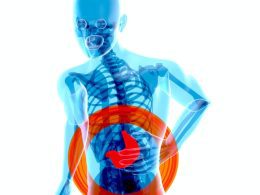If you’ve ever worried about your heart health or wondered how to keep your cholesterol in check, you’re not alone. Many of us reach a point in life where we realize that taking care of our hearts isn’t just about what we eat but also about how we move.
Lifestyle modification includes exercise, and it isn’t just about intense workouts or marathon running. It’s about finding joyful movement that keeps our hearts strong and our bodies energized. Whether you love walking in nature, dancing to your favorite tunes, or practicing yoga, every step you take can make a difference. Let’s dive into how exercise can lower cholesterol and protect your heart because your health is worth it, and so are you.
Cholesterol, a fatty substance found in our blood, is often misunderstood. It’s essential for various bodily functions, including hormone production and cell membrane formation. However, too much of the “bad” cholesterol (low-density lipoprotein, or LDL) can lead to plaque buildup in the arteries, increasing the risk of heart disease. On the flip side, “good” cholesterol (high-density lipoprotein, or HDL) helps remove LDL from the bloodstream. The balance between these two determines your risk level.
So, where does exercise come in? Physical activity plays a crucial role in maintaining this balance. Regular exercise has been proven to lower LDL cholesterol while raising HDL cholesterol, creating a heart-protective effect that can be life-changing.
How Exercise Lowers Cholesterol
1. Boosting HDL (Good Cholesterol)
One of the most significant benefits of exercise is its ability to increase HDL cholesterol. Think of HDL as your body’s cleanup crew, it helps transport LDL cholesterol away from the arteries and back to the liver, where it’s processed and eliminated. The more HDL you have, the better your body can manage cholesterol levels. Studies show that aerobic exercise, such as running, cycling, and swimming, can effectively increase HDL levels over time.
2. Reducing LDL (Bad Cholesterol)
Exercise helps lower LDL cholesterol in a couple of ways. First, it increases enzymes that break down LDL, making it easier for your body to remove excess cholesterol. Second, physical activity improves circulation, which reduces the likelihood of LDL particles sticking to artery walls and forming plaque.
3. Enhancing Fat Metabolism
A sedentary lifestyle can lead to an accumulation of unhealthy fats in the bloodstream. Exercise promotes the breakdown and utilization of fats, preventing them from being stored as LDL cholesterol. It also helps manage triglycerides, another type of fat that contributes to heart disease when present in high amounts.
4. Managing Weight and Insulin Sensitivity
Excess weight, particularly around the abdomen, is linked to higher LDL levels and lower HDL levels. Exercise helps regulate weight, making it easier to keep cholesterol levels in check. Additionally, improved insulin sensitivity from regular exercise helps prevent diabetes, a condition that often coexists with high cholesterol and increases cardiovascular risk.
Best Exercises for Heart Health and Cholesterol Management
When beginning a fitness journey, many wonder which exercises are most effective. The key lies in a balanced mix of aerobic workouts, strength training, and flexibility exercises.
1. Aerobic Exercise (Cardio)
Activities like brisk walking, jogging, cycling, swimming, and dancing get your heart rate up and improve cardiovascular endurance. The American Heart Association suggests engaging in moderate-intensity aerobic exercise for at least 150 minutes per week. If you’re just starting, even a 10-minute walk after meals can make a difference.
2. Strength Training
Lifting weights or using resistance bands helps build muscle, which in turn improves metabolism and fat utilization. Strength training at least twice a week complements aerobic exercise by further reducing LDL and increasing HDL.
3. High-Intensity Interval Training (HIIT)
This type of exercise is particularly effective for boosting metabolism and improving cholesterol levels quickly. Just 20–30 minutes of HIIT a few times a week can have significant heart health benefits.
4. Yoga and Flexibility Exercises
Yoga might not be the first thing that comes to mind for cholesterol management, but research suggests it helps lower LDL and improve overall heart health. The stress-reducing effects of yoga also contribute to better cholesterol regulation.
Making Exercise a Habit
Starting an exercise routine is tough. But once you experience the benefits, it becomes a non-negotiable part of your life. The following tactics may be useful to you:
1. Find What You Enjoy
Exercise doesn’t have to be intense or exhausting to be effective. The key is to choose activities you genuinely enjoy, whether it’s dancing, hiking, swimming, or even a simple evening walk. Finding joy in movement makes it easier to stay consistent.
2. Set Realistic Goals
Start small and build up gradually. Setting achievable goals, like 30 minutes of activity three times a week, can help establish a routine without feeling overwhelmed. As your stamina improves, you can increase the frequency or intensity to match your comfort level.
3. Make It Social
Working out with a friend, joining a fitness class, or becoming part of a walking group adds accountability and makes exercising more enjoyable. Social connections can turn a routine workout into a fun, motivating experience that keeps you coming back.
4. Track Your Progress
Keeping a journal or using a fitness app can help monitor your improvements over time. Whether it’s tracking your endurance, strength, or simply how you feel after each session, seeing progress can be a powerful motivator to stay committed to your exercise routine.
You may also read: Managing Hair Loss: What to Know About Alopecia
The Bigger Picture: Exercise as a Lifelong Commitment
Lowering cholesterol isn’t just about diet or medication—it’s about long-term lifestyle changes. Exercise is one of the most powerful tools for preventing heart disease, and its benefits go beyond cholesterol management. Regular physical activity helps regulate blood pressure, improves mood, boosts energy levels, and strengthens overall cardiovascular function.
Incorporating exercise into daily life can lead to significant improvements in overall well-being. Increased energy levels, reduced stress, and better health outcomes are just some of the positive effects of staying active.
For those looking to manage cholesterol levels or simply maintain a healthy heart, starting small is key. Incorporate movement into daily routines, find enjoyable activities, and gradually build up exercise habits. Every step taken toward an active lifestyle contributes to a stronger, healthier future. Moreover, many organizations near you in Michigan and Texas are conducting cardiovascular disease clinical trials, focusing on innovative treatments and prevention. With cutting-edge research, doctors and scientists strive to reduce the global impact of CVDs by developing new therapies and enhancing patient care.
So, what’s stopping you? Lace up those joggers, take that first step, and embrace the power of movement for a healthier, happier heart












